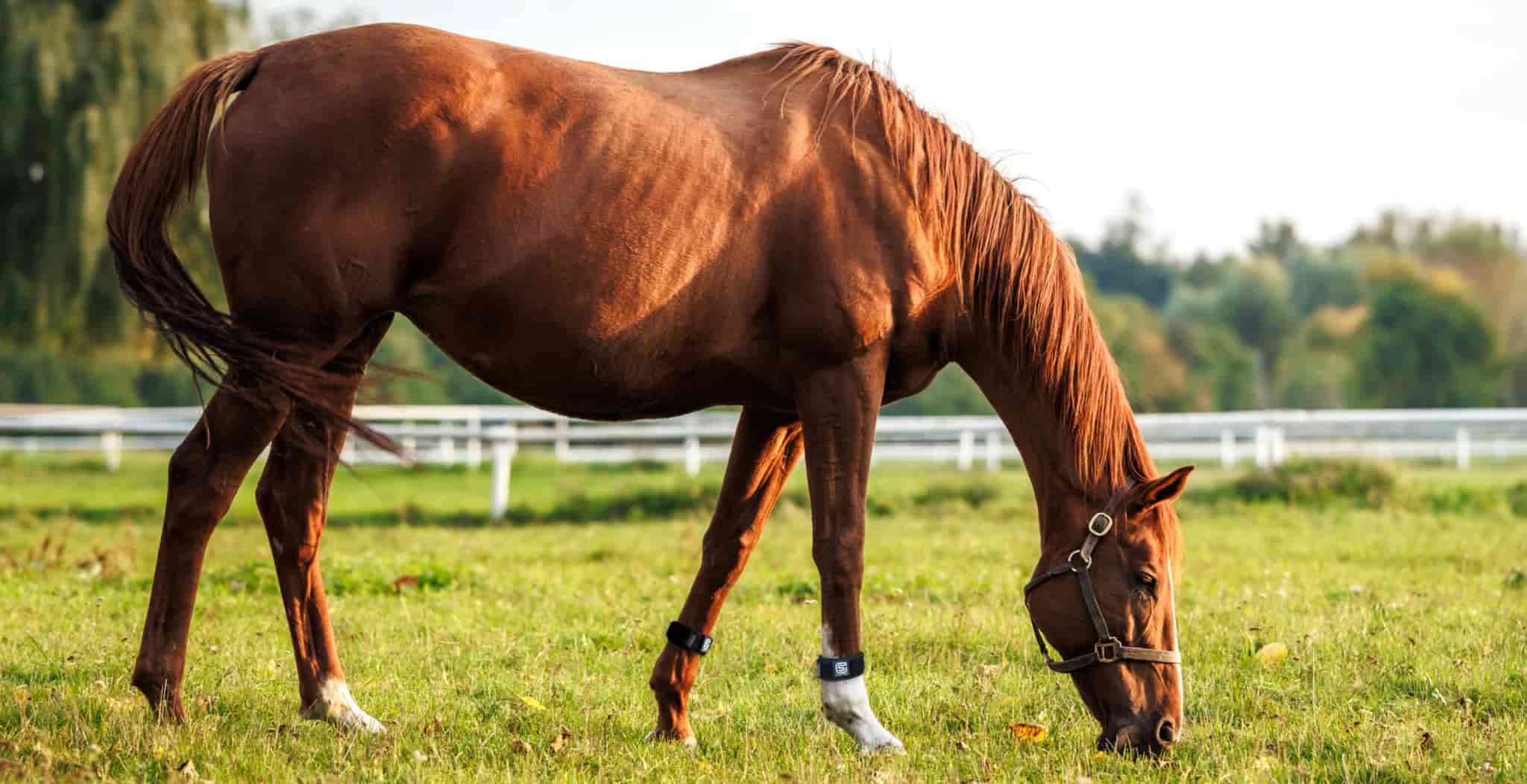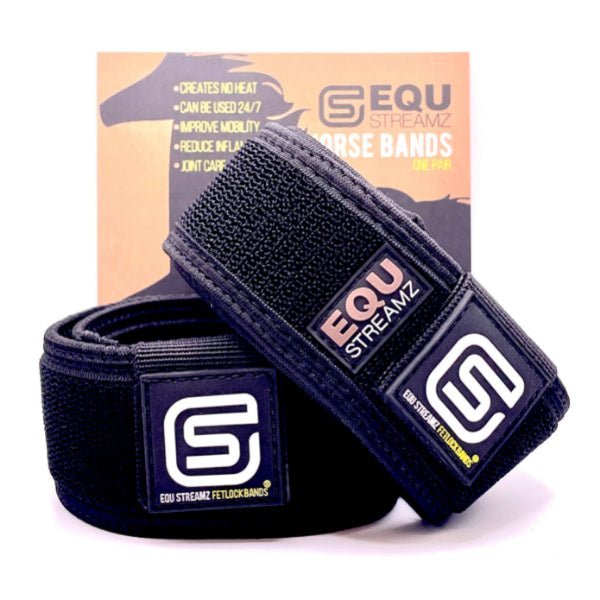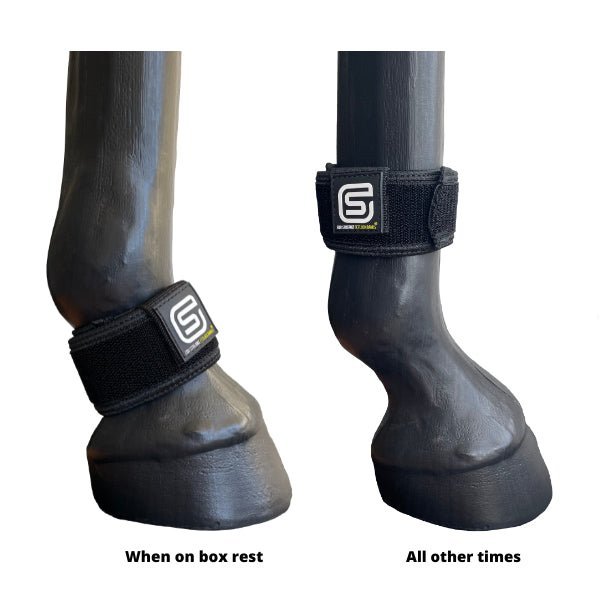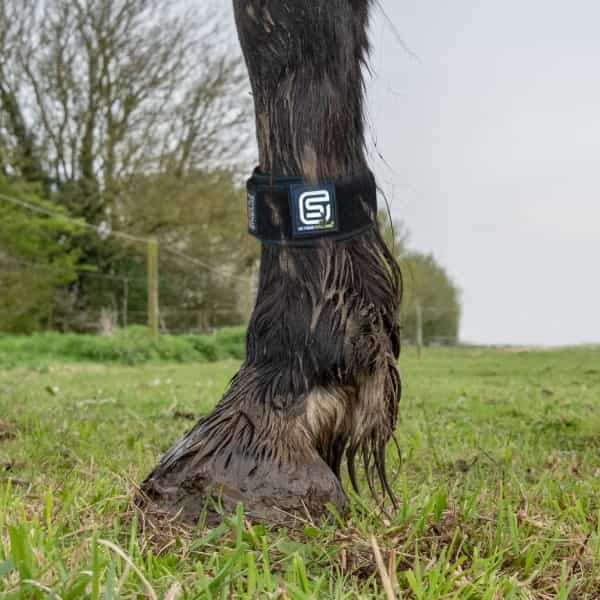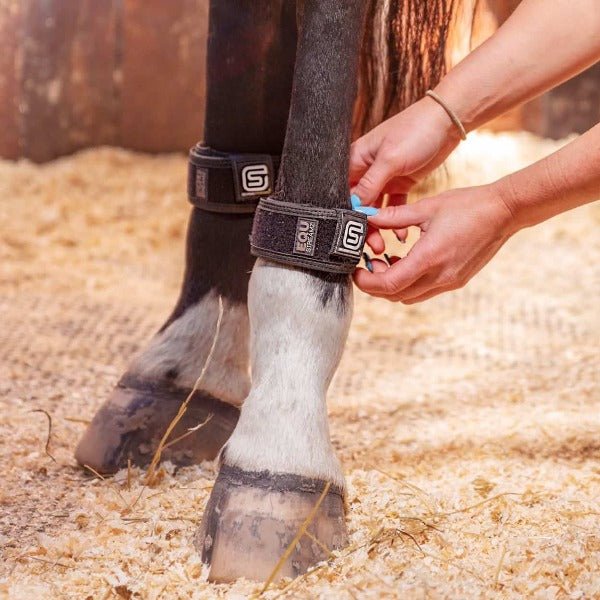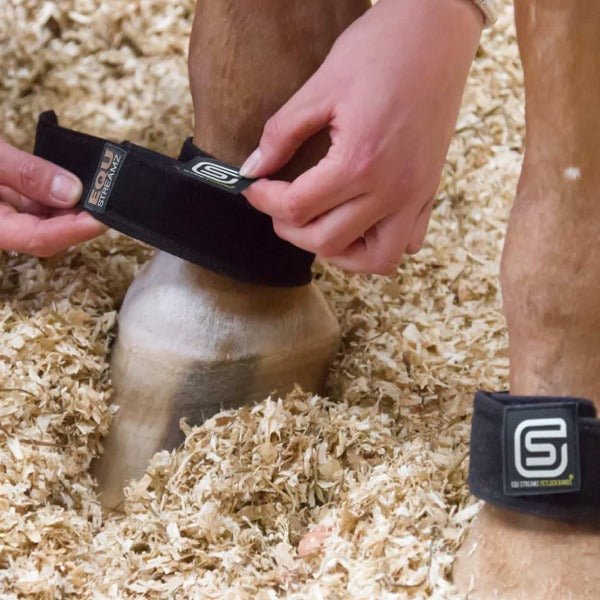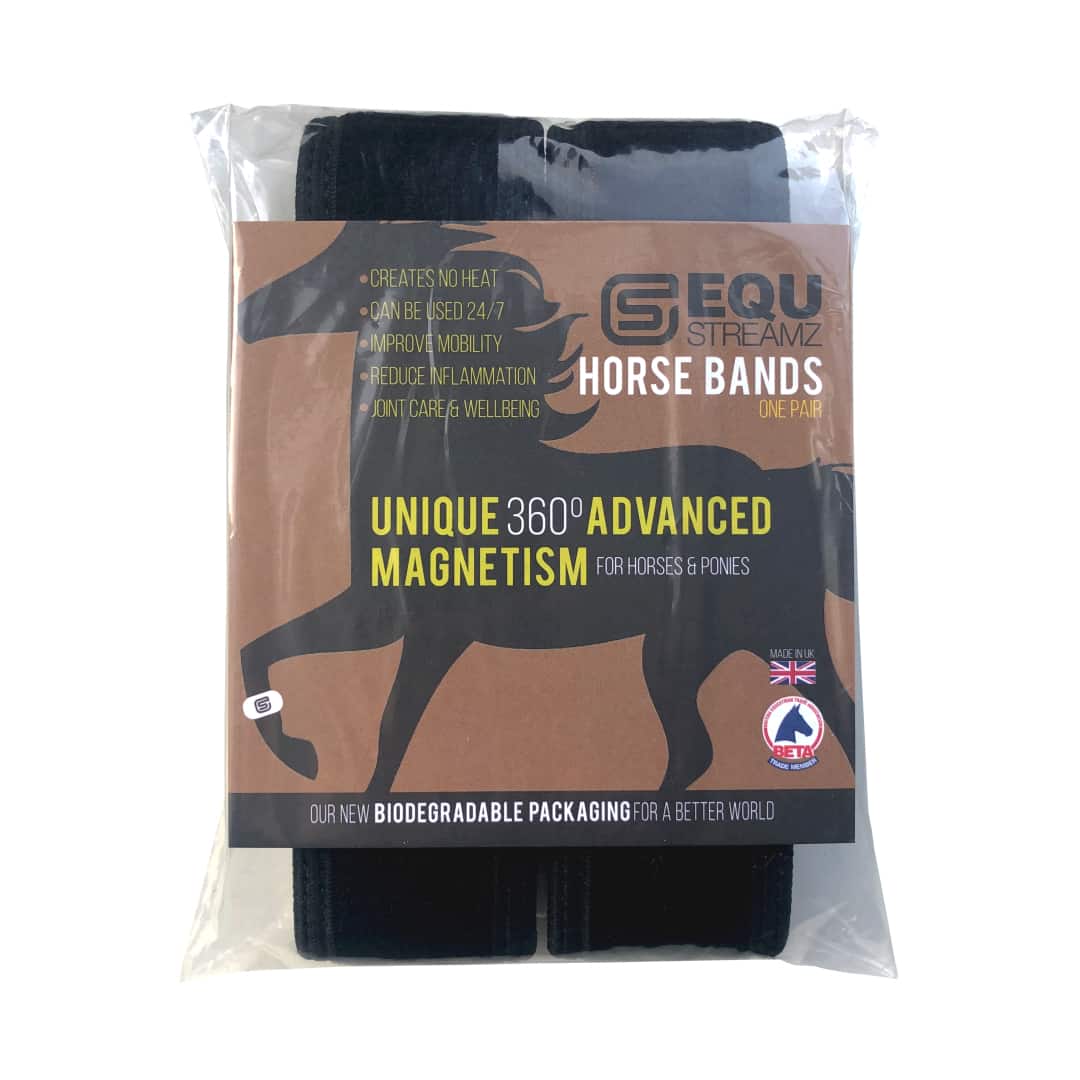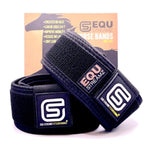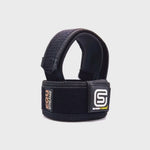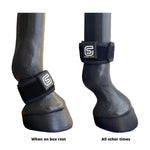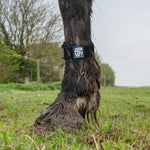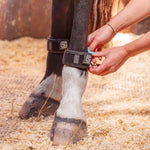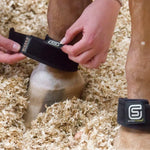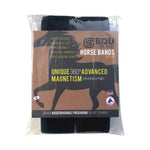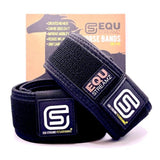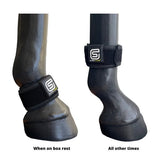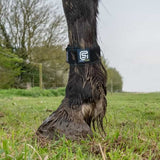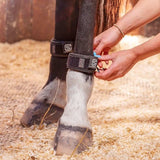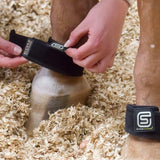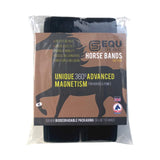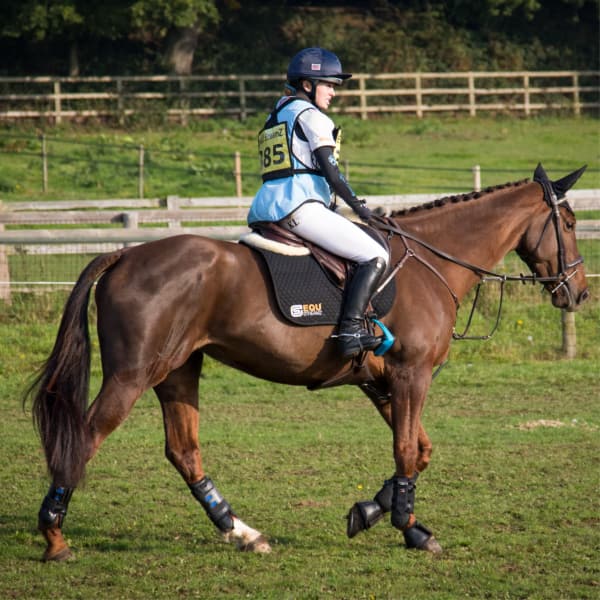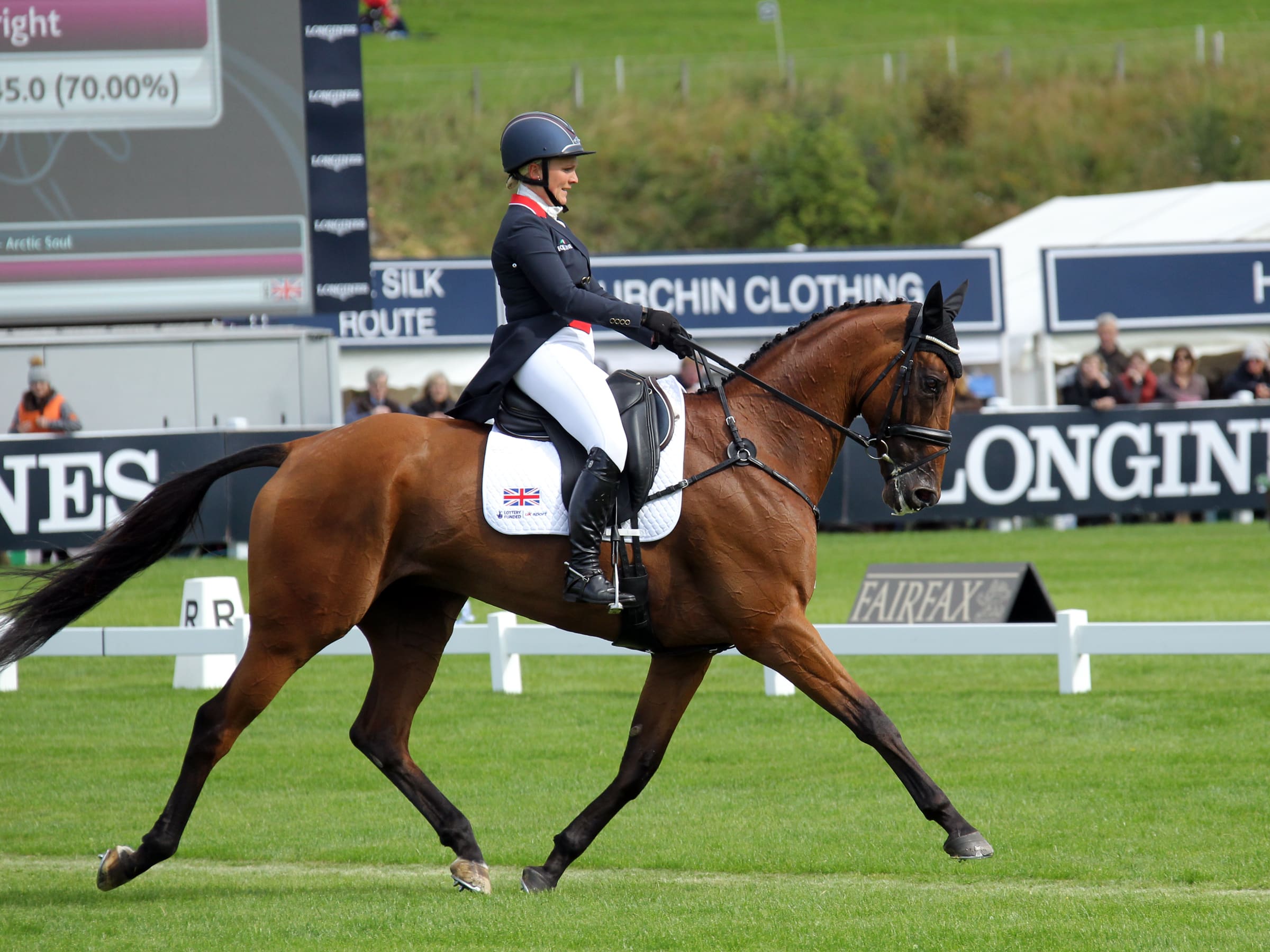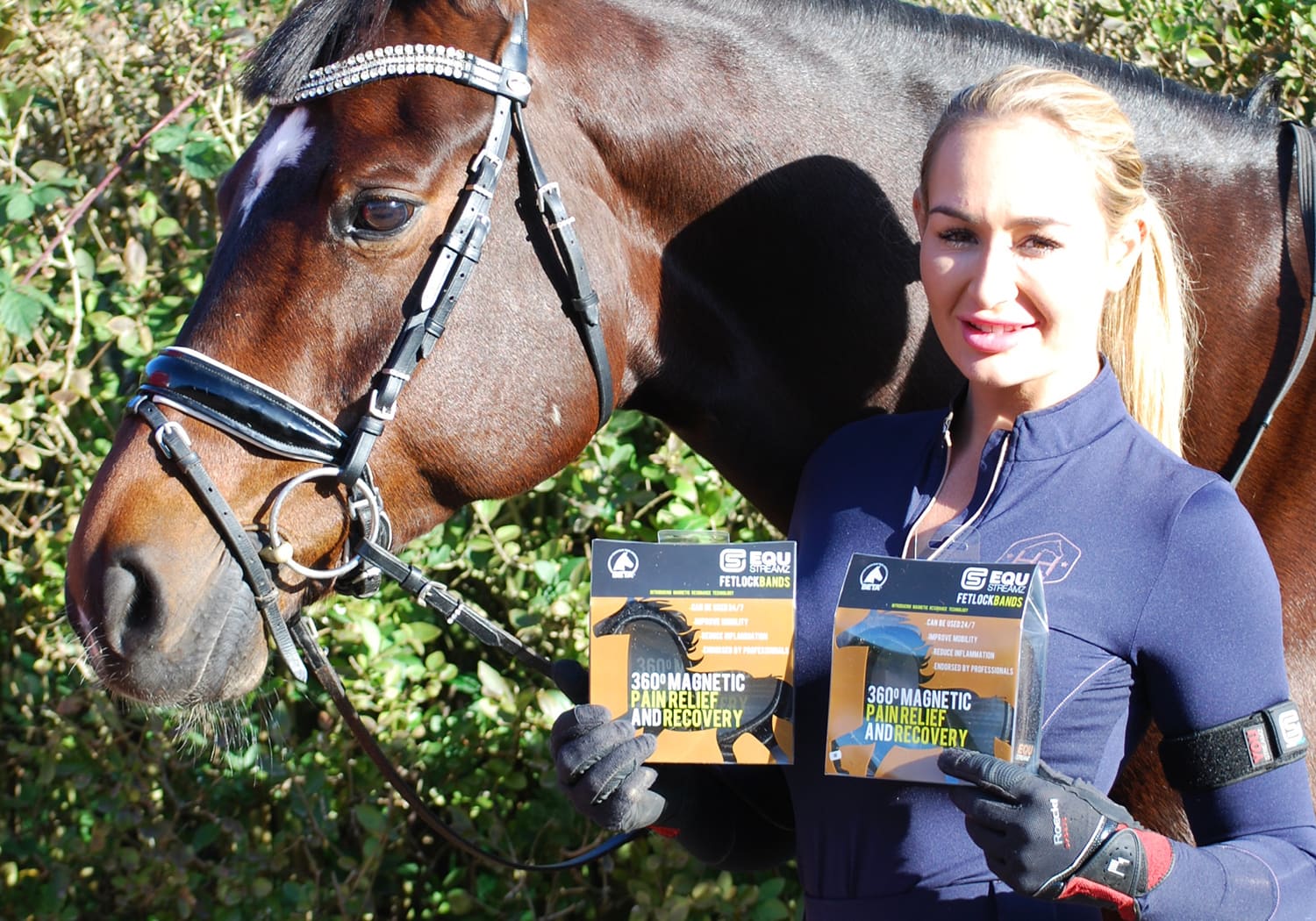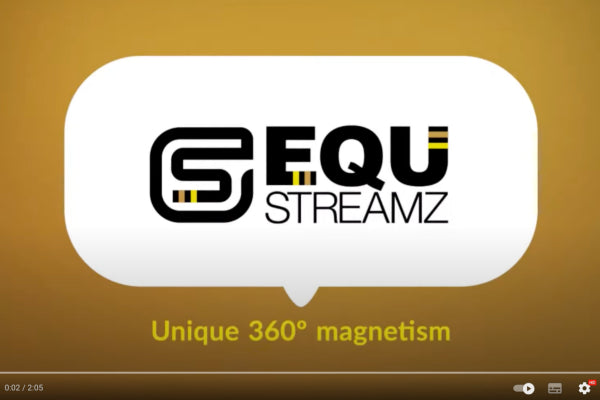
What makes EQU StreamZ so special?
✔︎ Non-invasive magnetism
✔︎ Suitable for 24x7 use
✔︎ Use on front or hind legs
✔︎ Full body coverage
✔︎ No 'build up' required
✔︎ One-size-fits-all
✔︎ Suitable on inflammation
✔︎ Preventative support
More about
EQU StreamZ, for Horses
EQU StreamZ magnetic horse bands introduce a new technique to the ever growing magnetic therapy industry for horses – non-invasive 360º resonance technology.
Traditional magnetic therapy has been used for many years within the equestrian community commonly integrated into magnetic horse boots or rugs. Over the years, these traditional magnetic devices have achieved limited clinical support and the reputation in using these traditional techniques to benefit equine health is mixed.
Traditional magnetic technologies produce a thermal reaction in the living system; this reaction can prevent their long term use or their ability to use on horses directly after an injury or when they are rehabilitating.
Magnetic therapy has claimed to support many equine health conditions such as equine joint conditions, ligament or muscle injuries, laminitis, navicular, splint injuries, ringbone, windgalls and much more. Whether you are looking to support your horses mobility, improve their wellbeing or provide a solution to support their ongoing recovery StreamZ has proven within the equine community to be a go-to-product and a world leader in the magnetic therapy industry.
EQU StreamZ bands introduce a groundbreaking low-impact magnetic approach that redefines how magnetic fields are utilised, allowing for extended usage periods including through turnout or extended box rest. Unlike traditional magnetic devices, StreamZ's advanced magnetic technology eliminates the need to remove them during turnout due to no heat being generated from their unique 360º spinning effect.
Extend application times, simplify the management of your horses tack and benefit from StreamZ revolutionary new technology - every step of the way.
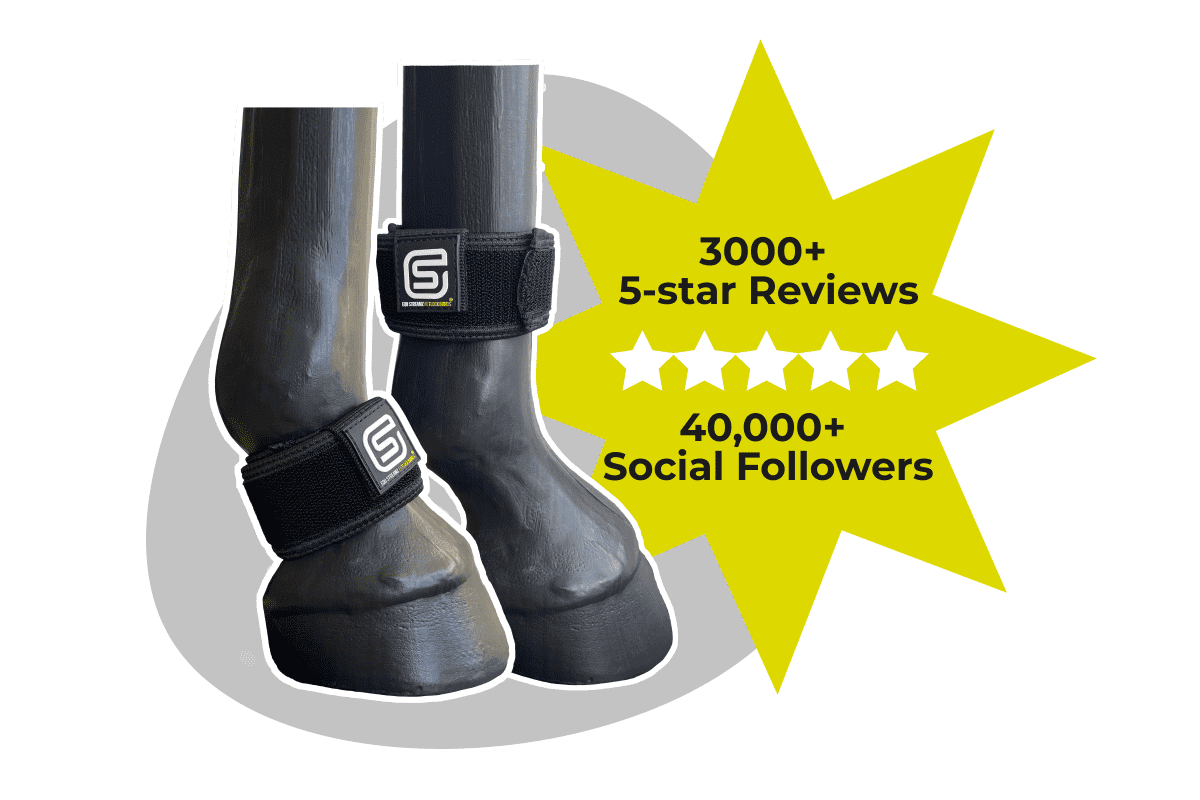

Endorsed by the Best
EQU StreamZ are proud to be endorsed by a variety of leading professionals within the equine community, from Olympic champions to budding amateurs. Used alongside their daily programs and as part of their ongoing management to help keep their horses in tip-top condition, provide joint care and support when travelling.
EQU StreamZ ambassadors include Olympians Gemma Tattersall (Eventing) and Sophie Wells (Para Dressage), International 5* show jumpers such as Trevor Breen and Harriet Nuttall and many other international stars across a variety of equine disciplines including showjumping, eventing, dressage, barrel racing, polo, trick riding, mounting shooting and so on.
Our partnerships with sponsored riders are not based on a financial commitment, but a promise to support their horse’s and make a difference.
A New Approach
A disadvantage in using traditional magnetic technology is the limited period of time in which they can be used, often due to the heat created by their pulsating process; when working with several horses or looking to reduce heat in a horses leg, using traditional magnetic products can be a challenge.
StreamZ Advanced Magnetic approach to the magnetic therapy market generates no increase in heat, unlike with traditional magnets found in horse boots or rugs. StreamZ non-invasive 360º magnetism allows the bands to be worn 24x7 including through turnout and long term.
EQU StreamZ bands can be wrapped around either fore or hind legs and above or below the fetlock joint - for full body coverage. Suitable for all weather conditions, when on box rest and in turnout.
Studies & Trials
Independent double-blind studies were carried out by a leading equine university. The positive results within these studies has led to further research being commissioned with a variety of partners including universities and equine technology experts. Although supported with clinical studies, StreamZ are unable to claim various and specific benefits due to strict advertising regulations. Anecdotal reviews help ‘spread the word’ but do not represent scientific proof. As a complementary device EQU StreamZ horse bands should be used alongside prescribed medications and not as a substitute.
StreamZ are committed to continuing a range of studies, both clinical and anecdotal, and to help achieve this goal have further studies being arranged to focus on levels of lameness, stride lengths and various ranges of movement.
Free Delivery
Our standard delivery option is FREE on orders of £25 or more.
Eco Packaging
We use use bio-degradable and recycled materials in our packaging.
Express Delivery
In a rush? Use our Express delivery option for 1-2 business day delivery in the UK.

